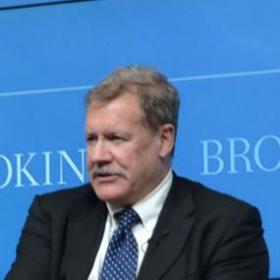
Securing the Russian and Turkish Frontiers of Europe
Greg Austin wrote this piece for his weekly column in New Europe.
Land borders are not what they used to be. Finance and investment values are traded through the ether in what often seems like a new borderless world. Even in terms of physical borders, which of course still exist, the air borders of most countries now seem more important. High value trade comes by air cargo as do the tourist dollars. The new threats, such as pandemic and terrorism, also come across the air border more often than across dry ground. In 2009, EU countries refused entry to more than 50,000 people at their air borders.
But this relationship between air frontiers and the land is worth a second look. In 2009, Spain turned away almost 400,000 people at its land borders, and Poland just over 25,000 people. The bigger pressure for illegal migration is on the ground not by air. And of course pandemics and terrorists do cross land borders.
We can look at the changed military strategic significance of ground and air borders in a similar way. Only a few countries of the world guard their ground borders with divisions and tanks. The ground borders have definitely become much less important, relatively speaking. Modern aircraft and missiles allow attack from remote distances with little effective warning time. And as American military leaders remind us, cyber warfare capabilities allow “global strike in milliseconds”.
How do these changed relationships between air and land boundaries play out in geopolitical terms for Europe? For the moment, Europe (the EU) looks very comfortable. There are no strategic military threats from any bordering country and almost no military defence of any kind for ground borders. The one low intensity exception is Cyprus.
For NATO Europe, the picture is very different. Turkey has land borders with Iran, Iraq and Syria that present a range of low level and high level strategic risk, and an active cross-border threat of terrorism and insurgency.
For OSCE Europe, the picture becomes even more complicated. Not only does that include the Turkish frontier’s challenges, but it raises the stakes considerably. Suddenly there are “European” land borders with Afghanistan, China and North Korea.
What then is the fundamental geopolitical character of Europe’s land borders and where in strategic terms, do these borders actually sit? Few would imagine in strategic terms that the EU is the geopolitical essence of “Europe”. Surely, at the very least, Turkey is part of Europe’s land frontier. But “strategic Europe” (OSCE Europe) might also include Russia and Ukraine at least, even if more conservative views would be ambivalent or negative about including the Central Asian states that border Afghanistan.
Who is looking after border security of “strategic Europe”? What are the common plans or concepts for geopolitical security in the arc from Antakya to Almaty (via Kirkuk and Kunduz)? As we go into the summit season (NATO in November and OSCE in December), who will take up this question?
It is very plain that the United States will not. It would be seen to be against US interests to do so. That is perhaps understandable at one level. For countries of Europe, however defined, continued collective disregard of the security of their geopolitical land borders on the east and south of both Turkey and Russia, or on the OSCE border with Afghanistan in terms of hard security planning can no longer be justified.
In the 20-30 year time frame to which defence planners must look, these frontiers may well be the biggest source of potential land-based threat to Europe. The prospects of war may remain remote. But, on a balance of reasonable probabilities, in the coming decades, this is the area where Europe’s ground forces will most likely be needed.

